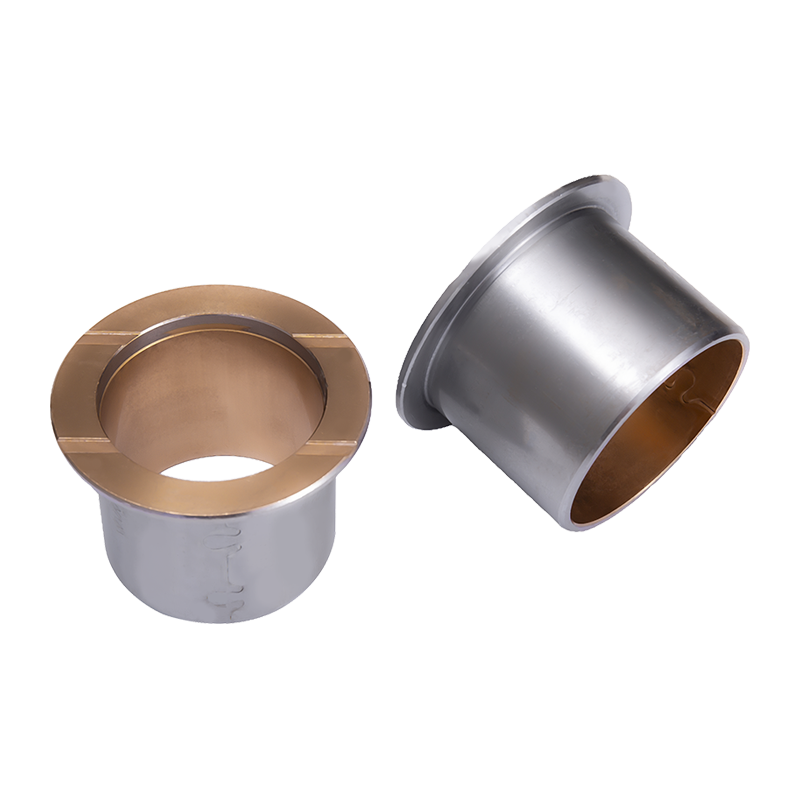In mechanical systems, the stability and accuracy of rotating components are essential to achieving reliable performance. Bearings play a central role in supporting loads, minimizing friction, and guiding motion. However, in addition to radial loads, rotating assemblies are often subjected to axial forces that can cause unwanted displacement along the shaft. This is where flanged bearings demonstrate their value. By integrating a mounting flange into the bearing design, they provide both structural support and positional control, effectively reducing axial displacement and ensuring stable operation.
1. Understanding Axial Displacement in Rotating Assemblies
Axial displacement refers to the undesired movement of a shaft or rotating element along its longitudinal axis. This movement can lead to misalignment, uneven load distribution, and premature wear of both the bearing and associated machine components. In high-precision machinery, even small amounts of axial play can cause vibrations, reduce efficiency, and compromise product quality. Therefore, managing axial displacement is critical for applications ranging from industrial equipment and conveyors to robotics and automotive assemblies.

2. Role of the Flange in Positioning
The key feature that distinguishes a flanged bearing from a standard radial bearing is the integrated flange—a projecting rim located on the outer ring. This flange provides a secure reference surface during installation. When the bearing is seated against a housing shoulder or fixed surface, the flange prevents the outer ring from shifting axially. This mechanical stop eliminates the need for additional locating components such as snap rings or retaining plates, simplifying design while enhancing positional accuracy.
3. Improved Mounting Stability
By acting as a built-in locator, the flange ensures that the bearing remains fixed within its housing, even under varying loads. This is especially important in assemblies where the shaft experiences both radial and axial forces simultaneously. For example, in conveyor rollers or agricultural machinery, the flange stabilizes the bearing against axial loads caused by belt tension or directional changes. The result is reduced shaft wandering and smoother operation.
4. Protection Against Vibration-Induced Movement
Rotating systems are often exposed to vibration and dynamic forces that can loosen components over time. In conventional bearings, this may lead to gradual axial creep. The flange in a flanged bearing counters this effect by providing a rigid stop that resists axial migration. This enhances reliability in high-vibration environments such as construction machinery, pumps, or automotive drivetrains.
5. Facilitating Precise Alignment
Flanged bearings also play an important role in ensuring correct alignment during assembly. The flange serves as a positioning aid, helping technicians achieve consistent and accurate placement. Proper alignment reduces axial stress and ensures uniform load distribution across rolling elements, which in turn extends bearing life. In precision applications like robotics or machine tools, this property contributes to repeatable performance and long-term stability.
6. Versatility Across Bearing Types
Flanged designs can be applied to various bearing types, including ball bearings, plain bearings, and self-lubricating bushings. Each variation benefits from the flange’s ability to restrict axial movement. For example, flanged ball bearings combine radial load support with axial positioning, while flanged sleeve bearings are often used in low-speed or oscillating applications where axial retention is equally important.
7. Reduced Need for Additional Components
Another way flanged bearings help reduce axial displacement is by eliminating the need for secondary retention methods. Traditional approaches may require snap rings, end plates, or precision machining to create shoulders in housings. By integrating the flange, designers reduce part counts, simplify assembly, and minimize potential failure points. This not only improves reliability but also reduces overall system cost.
Conclusion
Flanged bearings address a common engineering challenge: controlling axial displacement in rotating assemblies. Through the integration of a flange, these bearings provide mechanical stability, resist vibration-induced movement, and simplify alignment. The result is a more reliable, durable, and efficient rotating system. Whether used in heavy-duty industrial machinery, precise robotics, or everyday equipment, flanged bearings serve as a practical solution to ensure both radial support and axial positioning, making them an indispensable component in modern mechanical design.



 English
English русский
русский Español
Español عربى
عربى


